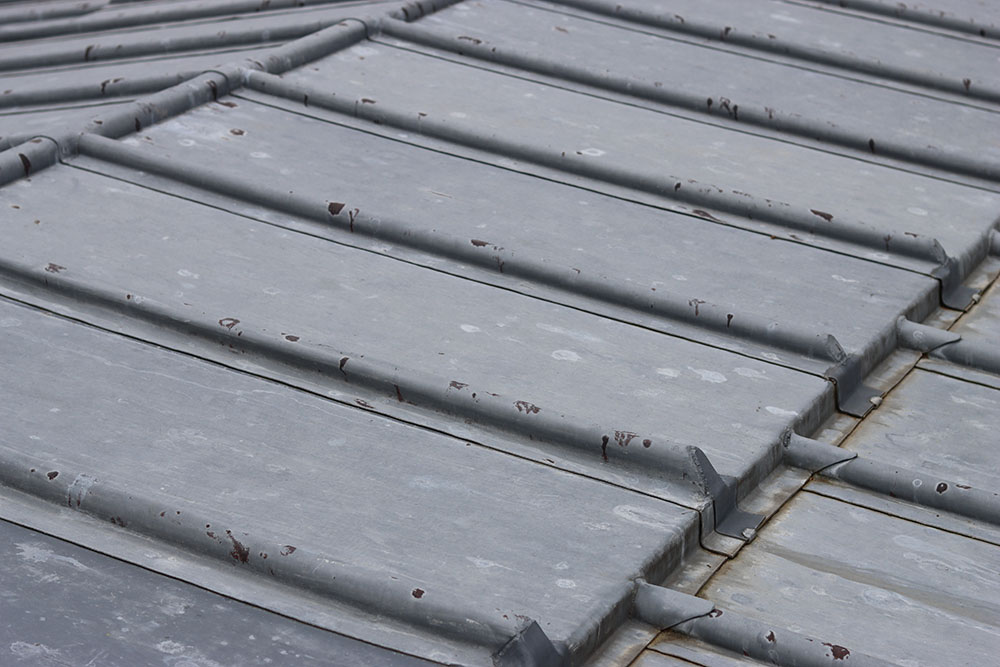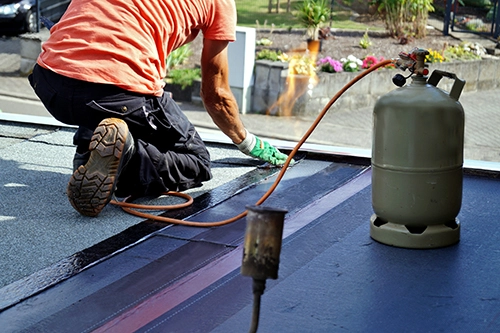- About Us
- Services
- Blog
- Contact
Need a quote?
When it’s been expertly fitted and well looked after, a lead roof can be a brilliant weather-proof barrier that can last over 100 years.
Thanks to its flexibility and durability, lead sheet is one of the most popular materials for flashing and roof work in Britain, and it’s been that way for a long time. Many period buildings feature original, lead roofs that are still perfectly intact.
If your property has a lead roof and you’re wondering how to keep it looking its best, you’re in the right place. Our lead roofing experts are going to share some knowledge.




Well, first off, you should know that lead is a hardy material. If your lead roof has been properly fitted and specified, it shouldn't actually need any maintenance.
That being said, it’s a good idea to keep your eye on it. Inspect it once a year, especially if you have had any bad weather, or you have heard things banging/scraping on the roof. Look for any problem areas or signs of concern…
If you’re looking for problem areas you need to know what is normal for a lead roof.
Well, a fresh lead roof will have a matte, dark grey finish. However, over time the rain will corrode the top layer of the lead and that will cause a lead carbonate to form on the surface of your roof. This lead carbonate creates a unique pattern, but this is perfectly normal. This lead carbonate is protecting the layer of lead that’s underneath.
So, if you get up there and think ‘This looks old’ that’s probably the lead carbonate doing its job!
There are two main causes for concern when it comes to lead roofs:
Our team specialises in all aspects of lead roofing, from the installation of new lead roofs to the maintenance and repair of existing ones. With years of experience in the field, we bring a wealth of knowledge and skill to every project, ensuring the highest quality of workmanship. Whether you're looking to upgrade your property with a durable lead roof or need expert advice on preserving the longevity of your current lead roofing, we are here to provide comprehensive, reliable solutions.
To speak to our lead roofing experts, just get in touch.
It depends on the construction, but the minimum weight a flat roof must be capable of bearing is 300lbs. This refers to a concentrated weight where a load is positioned on just one area of the roof. So, for example, a commercial flat roof can approximately support a 300lb HVAC unit in a 2.5×2.5ft single space.
If you opt for a flat roof anywhere on your property, remember that it comes with a need for proper maintenance. Low-slope roofing London-wide should be checked every six months or so, or after spells of bad weather, to spot any signs of damage. No matter how small, these should be addressed before they escalate. Remove any debris (leaves, twigs and so on) regularly to avoid these blocking the gutters and allowing water to pool and stand on the roof.
If there are trees in the close vicinity, keep them cut back to reduce the amount of foliage that falls on your flat roof. And check internally for signs of moisture, dampness or water damage on a regular basis. Spotting problems early means resolving them will be cheaper in the long run.

Building a flat roof can be done in three ways. The simplest and most cost-effective choice for levelled roofing London-wide is to construct a warm roof where a roofing membrane is placed over the insulation that keeps the timber structure warm. Another option is to create a cold roof where insulation is positioned between the rafters under the ply roof covering. This is commonly applied to flat-roofed extensions.
The third method is the hybrid roof that contains diverse elements. Their designs require a gap of ventilation above a warm roof to prevent excess moisture within the roof structure.
If you’re looking for flat roofing local contractors, don’t just select the first firm you come across. Find a roofing company that’s been in business for a while and can demonstrate a good track record in installing, repairing, and replacing flat roofs specifically. Ask for recommendations from your own network or from a local trade association. If you need refurbishment work done to 50% or more of your roof, you’ll need a roofing contractor who can self-certify their work under the Competent Person Scheme. Otherwise, the Building Control department at your local authority will need to approve the job before it begins.
Ask whether they are covered by liability insurance and how long they’ll guarantee the work they will carry out. And never just opt for the cheapest quote unless you’re quite sure they’re the best company for the job. You can’t afford to compromise on your roof as the structural integrity of your property depends on it.
Ensuring your flat roof will comply with building regulations before installation can save property owners time, money and stress. First, the roof must have a slope of around 1:80, with water draining away to one or two roof edges. Waterproofing must be extended up to the adjacent walls with at least 150 mm from the surface of the roof.
Contractors must install ventilation in cold roofs. For warm roofs, the deck must be bonded with a VCL. The roof should have the capacity to withstand strong winds and be sturdy enough to take an individual’s weight. Finally, check whether planning permission is needed. Typically, this is only required if you live in a conservation area or a listed building, or are making significant changes to an existing roof.
If you’re looking for top roofing solutions at competitive rates, check out our range of roofing services at Environ Roofing Company London. To get started, call one of our representatives today!

